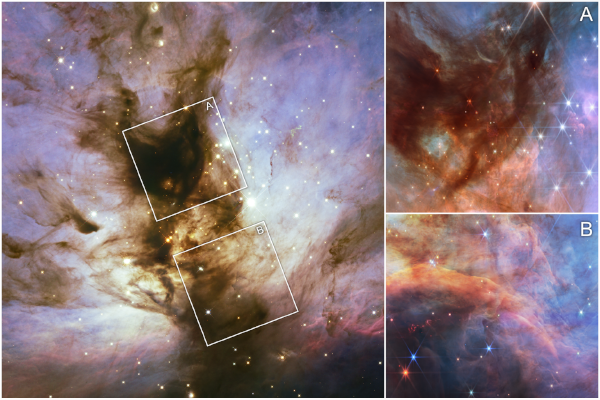In an article for The University Record, Edward H. White II, a 1959 graduate of the University of Michigan, was featured about being the first American to walk in space. His story was featured in the article “It Happened at Michigan: U-M Alum was First American to Walk in Space” | June 23, 2025
Tag: space
NASA Announces Lepri Will Serve as SunRISE Mission Lead

In June, NASA announced that Professor Sue Lepri, who works as the director of the Space Physics Research Laboratory and a professor at the University of Michigan Department of Climate and Space and Engineering, is taking over as the Principal Investigator of the SunRISE Mission, or the Sun Radio Interferometer Space Experiment.
Professors from U-M Law and U-M Aerospace Co-Instruct Course on Removing Space Debris

The Problem Solving Initiative (PSI) course series, where students from a variety of academic backgrounds come together and learn how to collaborate and solve problems, recently drew its latest iteration to a close with an end-of-semester presentation and forum.
This semester’s PSI was co-taught by U-M Law School Professor Donald Moore and U-M Aerospace Engineering Assistant Professor Oliver Jia-Richards and covered the topic of how to handle and remove debris from space.
Alumna Aisha Bowe Ready to Launch on Historic All-Women Space Flight

Aisha Bowe, an alumna from Michigan Aerospace, is set to board the first-ever all-women Blue Origin flight, scheduled to launch on April 14, 2025. This historic flight will be Blue Origin’s 11th human space mission that will cross the Kármán line – the internationally recognized boundary between Earth’s atmosphere and outer space, 62 miles (100 km) above Earth.
New FireSat Set to Transform Wildfire Detection and Response

The first prototype of the FireSat constellation launched into low-Earth orbit in March, paving the way for a large network of satellites that will help enhance wildfire detection, mitigation and response around the world.
The entire constellation will eventually consist of 50 satellites that will use infrared cameras to detect and track wildfires from space. They will also use a next-generation Global Navigation Satellite System Reflectometry (GNSS-R) receiver that can measure soil and vegetation moisture based on how the surface reflects GPS microwaves, harnessing signals already bouncing off the Earth from navigation satellites.
NASA Flight Surgeon Speaks to Unique Career Caring for Astronauts

The University of Michigan Space Institute welcomed its first seminar speaker to Ann Arbor, Michigan during the 2024-2025 academic year to present "Caring for Astronauts, One Mission At a Time." An alumna of the University of Michigan Medical School, Dr. Natacha Chough spoke about her role as a NASA Flight Surgeon for an audience of students, alumni and guests.
“Scientists Discover Smallest Galaxy Ever Seen”
In an article for space.com, Dr. Eric Bell, a professor at the University of Michigan Department of Astronomy, talks about how galaxies Andromeda XXXV and Andromeda could change how we think about cosmic evolution. He was interviewed in the article “Scientists discover smallest galaxy ever seen: ‘It’s like having a perfectly functional human being Continue Reading »
What Industry Wants: Model-Based Systems Engineering

George Halow, a professor of practice at Michigan Aerospace Engineering, launched a model-based systems engineering course that takes students from customer concept to design or prototype inside two semesters, often mentored by engineers at big name corporate sponsors.
Small, Faint and ‘Unexpected in a Lot of Different Ways’: U-M Astronomers Make Galactic Discovery

A discovery made by a team led by researchers at the University of Michigan tugs at the seams of some key cosmic lessons we thought we had learned from our own galaxy. This dwarf galaxy, named Andromeda XXXV and located roughly 3 million light-years away, is forcing astronomers to rethink how galaxies evolve in different cosmic environments and survive different epochs of the universe.
U-M Astronomers Peer Deeper into Mysterious Flame Nebula

Using NASA’s James Webb Space Telescope, or JWST, a team of researchers, including astronomers from the University of Michigan, are closing in on the answer to a looming cosmic question.
In probing the Flame Nebula, they’re finding out what’s the smallest celestial body that can form on its own from clouds of gas and dust in space.
